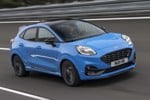Ten years ago, the prestige brands’ share of UK new car sales was 8%, but by the end of 2003 had grown to 17%. Significantly, almost 80% of this growth has occurred in the past five years. Aside from the inherent perceived desirability of their cars, says Alan Cole, editorial consultant at Glass’s Market Intelligence Service, several additional factors are helping prestige marques to grow their market share.
The weakness of economies in mainland Europe has made new prestige cars more affordable in the UK. For example, German manufacturers have increased right-hand drive production to exploit the UK consumer boom. Just 18 months ago, incentives on premium-brand cars were virtually unheard of, but the availability of significant discounts peaked a year ago and have been maintained ever since. Transaction prices, even for private buyers, have therefore reduced considerably, with the effect of increasing the number of prestige cars sold in the UK. While this has been detrimental to nearly-new values, three-year-old examples have been largely unaffected.
The continuing buoyancy of the UK economy is encouraging buyers to spend more, fuelling sales of desirable premium-priced vehicles. With house price inflation fuelling mortgage equity release, and with interest rates still low, the spending boom shows no sign of abating.
Even the prospect of further rate rises has not yet altered the feeling of relative wealth, and the affordability of finance has encouraged more consumers to spend additional amounts to get behind the wheel of a premium-sector car.
Fleet buyers have become increasingly aware of the importance of whole-life costs, which is greatly influenced by depreciation. With most disposals taking place after three years, good residual value performance and high levels of desirability are vitally important for companies looking to maximise their return when they defleet.
This is where prestige brands score over volume counterparts. In the upper-medium sector, average residuals (at three years/36,000 miles) are around 46%, while for volume models it is about 34%. That means a prestige car can often be more cost effective than a comparable volume model.
Cole adds: “Relative to the rest of the market, the values of prestige-brand cars have reduced slightly during the last three years but are now stable. We see no sign of accelerated falls in values in the short to mid-term future.
“There may come a time when values start to suffer more, but market share will have to increase significantly before oversupply results in a further weakening of values. The market share of premium brands looks certain to increase.”














Login to comment
Comments
No comments have been made yet.